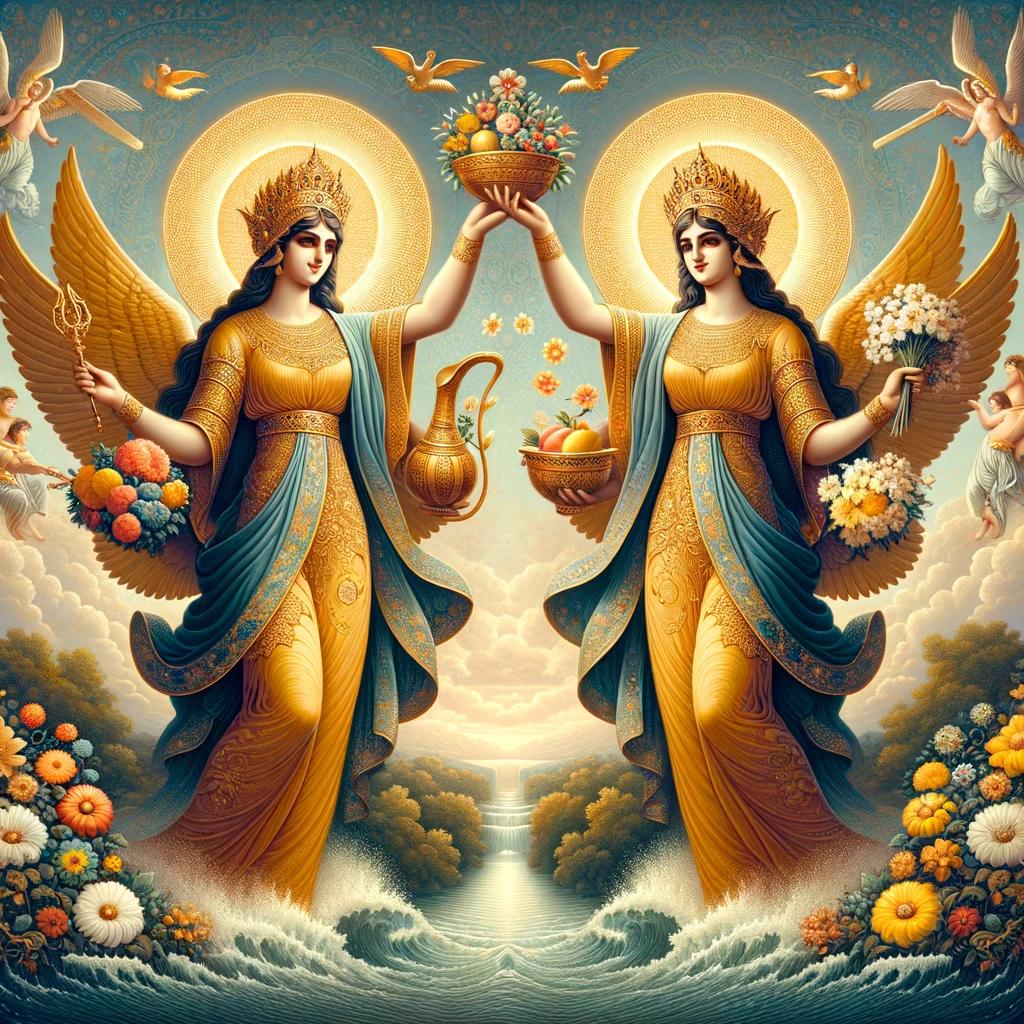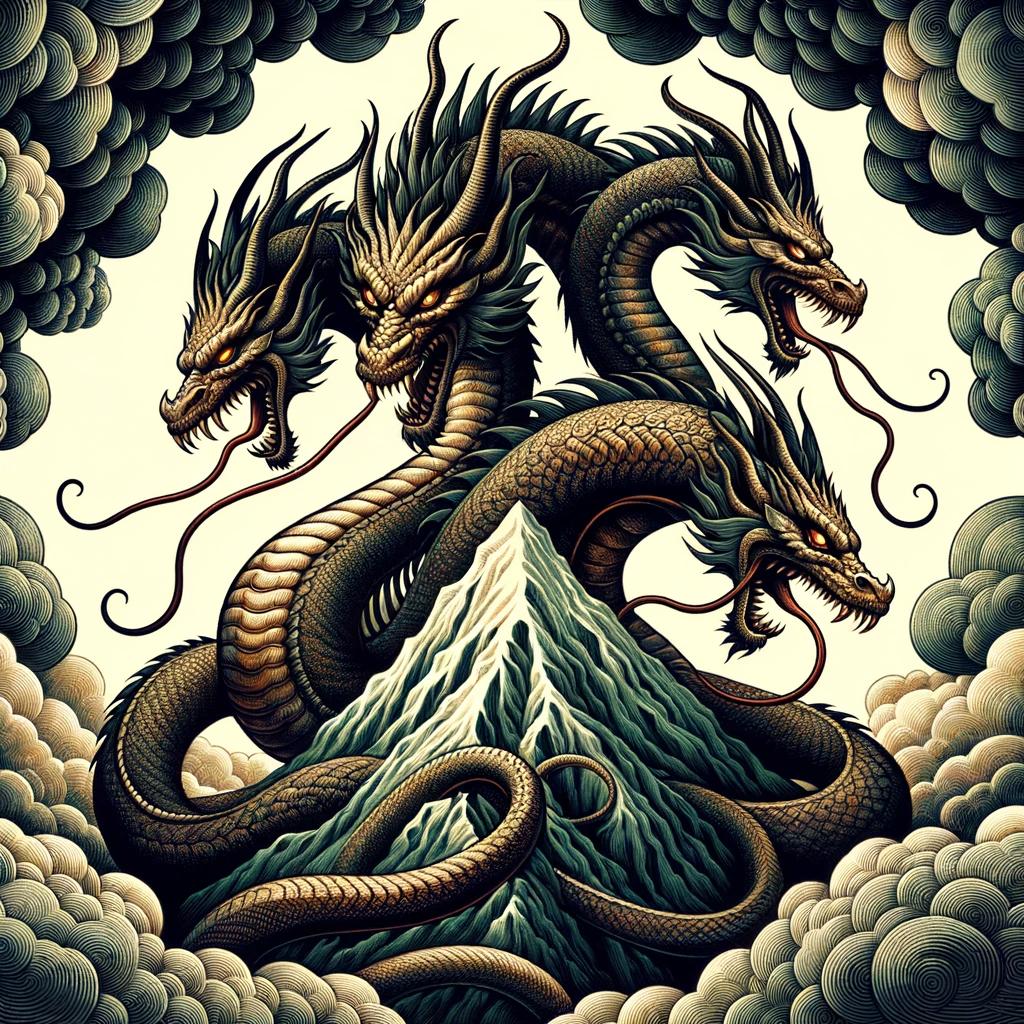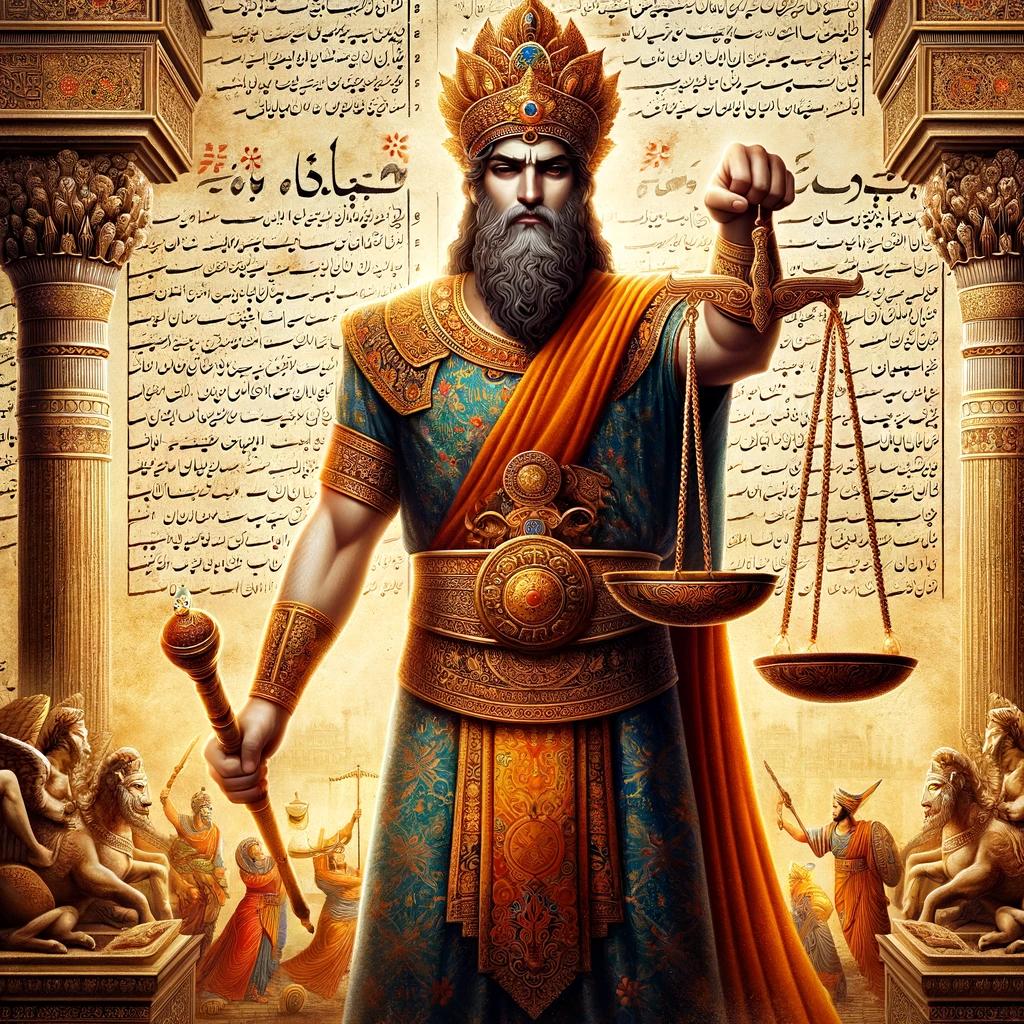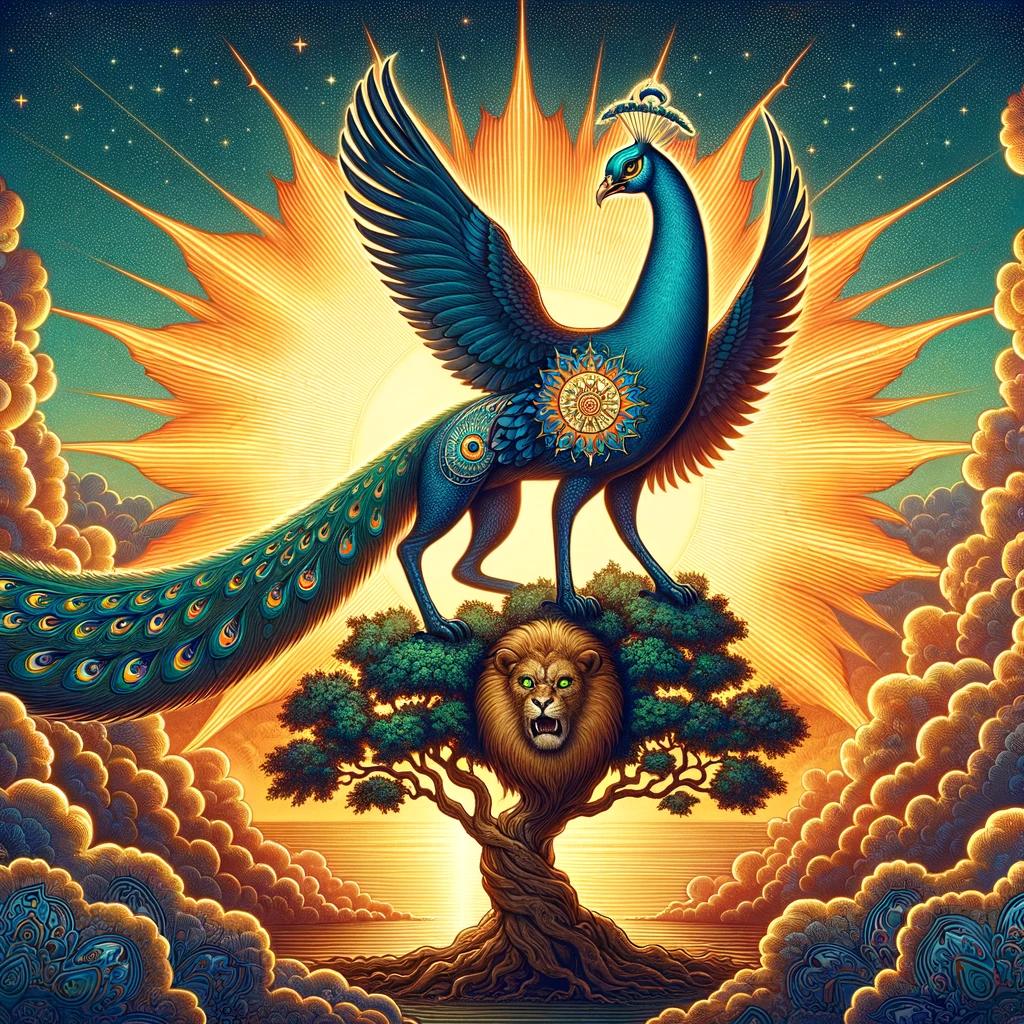‘Haurvatat and Ameretat: The Divine Sisters Presiding over Water and Plants’
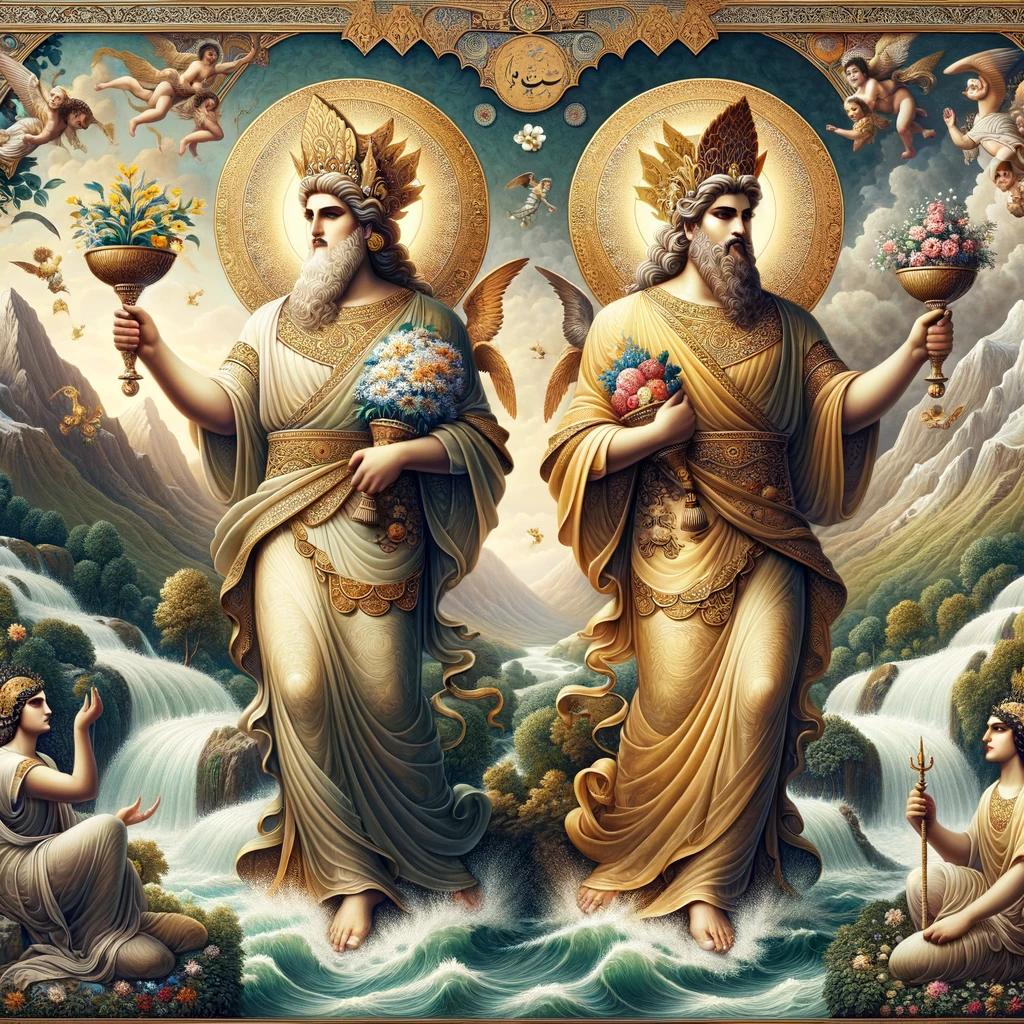
Haurvatat and Ameretat are two significant entities in Zoroastrianism, known as the divine sisters and part of the amesha spenta. They hold the power to preside over water and plants, granting rewards to those who participate in the nature of other amesha spenta.
Their importance is highlighted in Avestan texts and scriptures. Together, they symbolize integrity and immortality. This article delves into their mythological origins, powers, cultural representations, historical significance, and addresses frequently asked questions regarding their roles within the amesha spenta.
Understanding the Amesha Spentas in Zoroastrianism
In Zoroastrianism, the Amesha Spentas are regarded as divine entities that embody various aspects of Ahura Mazda’s divine attributes. They are often referred to as the “Bounteous Immortals” and are believed to assist Ahura Mazda in maintaining order and balance in the world.
The Role and Significance of Haurvatat and Ameretat
Haurvatat and Ameretat are two of the six Amesha Spentas in Zoroastrianism. They hold great significance and play crucial roles in the cosmic order. Haurvatat, also known as Haurvatāt or Hordad, represents wholeness, health, and integrity.
Ameretat, also called Ameretatāt or Amurdad, symbolizes immortality and everlasting life.
As guardians of water and plants, Haurvatat and Ameretat ensure the preservation and nourishment of life on Earth. They are believed to bestow rewards and blessings upon those who actively participate in the virtues and actions associated with the other Amesha Spentas.
Their Representation in Avestan Texts and Scriptures
Haurvatat and Ameretat are prominently mentioned in the Avestan texts, which are the sacred scriptures of Zoroastrianism. These texts provide insights into their qualities, attributes, and the reverence they commanded among ancient Zoroastrians.
The descriptions of Haurvatat and Ameretat in the Avestan texts depict their divine nature and depict their roles as guardians of water and plant life. These texts also highlight their association with other divinities and reveal their importance in the spiritual practices and rituals of Zoroastrians.
Exploring the Mythological Origins of Haurvatat and Ameretat
Delve into the fascinating mythological origins of Haurvatat and Ameretat, two prominent figures in Zoroastrianism. Their relationship with Ahura Mazda, the supreme deity in Zoroastrian belief, holds immense significance. Within the sacred texts of the Gathas and Yashts, references to Haurvatat and Ameretat provide further insights into their divine roles and attributes.
Their Relationship with Ahura Mazda
Haurvatat and Ameretat share a deep connection with Ahura Mazda, serving as divine manifestations of His qualities. Ahura Mazda upholds the principles of truth, wisdom, and order, and Haurvatat represents the embodiment of integrity.
Ameretat, on the other hand, symbolizes immortality and the eternal cycle of life and death. Together, they reflect Ahura Mazda’s divine attributes and contribute to the cosmic harmony revered in Zoroastrianism.
The Gathas and Yashts References to Haurvatat and Ameretat
- The Gathas, the sacred hymns of Zoroastrianism composed by Prophet Zarathustra, make references to Haurvatat and Ameretat as part of the amesha spenta, the six divine beings who are foundations of the faith.
- The Yashts, a collection of liturgical poems dedicated to various deities, praise Haurvatat and Ameretat extensively.
They highlight the sisters’ roles as bestowers of blessings and rewards to those who align with the principles of the other amesha spenta.
These references provide valuable insights into the symbolic and spiritual significance of Haurvatat and Ameretat, shedding light on their integral place within Zoroastrian mythology and worship practices.
The Powers and Attributes of Haurvatat and Ameretat
In Zoroastrianism, Haurvatat and Ameretat, the divine sisters and amesha spenta, possess unique powers and attributes that contribute to their roles within the celestial hierarchy. Recognized for their guardianship and bestowing of rewards, they hold significant importance in the faith.
Guardianship over Water and Plants
Haurvatat and Ameretat preside over two essential elements of life – water and plants. They are entrusted with the well-being and sustenance of these vital resources, symbolizing fertility, growth, and nourishment in the material and spiritual realms.
Their influence extends beyond mere physical existence, encompassing the metaphysical aspects of purity, harmony, and spiritual rejuvenation.
As guardians of water, these divine sisters ensure its purity and the prosperity it bestows.
They oversee the life-giving properties of water, its ability to cleanse and heal, and its role in rejuvenating the body, mind, and soul. Moreover, they emphasize the significance of sustainable water management and preservation, highlighting the interconnectedness between natural resources and divine order.
Similarly, Haurvatat and Ameretat’s guardianship extends to the world of plants. They nurture and protect the flora, overseeing their growth, vitality, and abundance. Through their divine influence, they encourage the cultivation of plants for sustenance, medicinal purposes, and ecological balance.
Furthermore, they inspire individuals to honor and cherish the plant kingdom, recognizing its inherent connection to life, regeneration, and the cycle of seasons.
Bestowing Rewards to the Devotees of the Amesha Spentas
Haurvatat and Ameretat are not only responsible for the guardianship of water and plants but also serve as reward-givers to those who embrace the virtues and teachings of the amesha spenta.
By actively participating in and aligning with the principles espoused by the other amesha spenta, individuals can attract the blessings and rewards bestowed by Haurvatat and Ameretat. These divine sisters grant recompense to those who strive for purity, integrity, and ethical conduct, promoting a life governed by righteousness and selflessness.
The rewards bestowed by Haurvatat and Ameretat are multi-faceted. They encompass both tangible and immaterial blessings, extending beyond material wealth to include spiritual enlightenment, wisdom, and harmonious relationships. By recognizing the interplay between physical and metaphysical dimensions, Haurvatat and Ameretat offer guidance and support in the pursuit of holistic well-being.
Devotees of the amesha spenta are encouraged to cultivate a deep understanding of the interconnectedness between their individual virtues and the cosmic order. By embodying the teachings and embodying the virtues represented by Haurvatat and Ameretat, they enhance their potential to receive the rewards and blessings that contribute to their spiritual growth and prosperity.
Cultural and Symbolic Representations of Haurvatat and Ameretat
Within Zoroastrianism, Haurvatat and Ameretat hold significant cultural and symbolic representations, reflecting their roles and attributes within the amesha spenta. These representations can be observed in Zoroastrian art and iconography, as well as their association with immortality and integrity.
Depictions in Zoroastrian Art and Iconography
Zoroastrian art and iconography often depict Haurvatat and Ameretat in visual forms that represent their divine nature and significance. These representations can vary, but common elements include their portrayal as graceful and radiant beings.
They are often adorned with symbols of water and plants, emphasizing their dominion over these aspects of life.
The artistic representations of Haurvatat and Ameretat aim to capture their essence and importance within Zoroastrian belief.
These depictions serve to inspire reverence and convey the spiritual connection between humans and these divine entities.
Their Connection with Immortality and Integrity
Haurvatat and Ameretat are closely associated with the concepts of immortality and integrity within Zoroastrianism. As representatives of the amesha spenta, they embody qualities that are essential for the pursuit of a righteous life.
Immortality, in this context, refers not only to physical longevity but also to the eternal existence of the soul. Haurvatat and Ameretat symbolize the immortal aspect of human nature and the potential for spiritual growth and enlightenment.
Integrity, on the other hand, signifies moral and ethical wholeness. Haurvatat and Ameretat embody the principles of purity and completeness, serving as guides for individuals seeking to uphold ethical values and achieve spiritual harmony.
Together, the cultural and symbolic representations of Haurvatat and Ameretat enrich the understanding of their role within Zoroastrianism, emphasizing their significance as divine beings presiding over water and plants, and their connection with the eternal aspects of human existence.
Historical Significance of Haurvatat and Ameretat
The historical significance of Haurvatat and Ameretat in Zoroastrianism is profound and can be seen in their influence on worship and rituals within the faith.
Influence on Zoroastrian Worship and Rituals
Haurvatat and Ameretat hold a prominent place in Zoroastrian worship and rituals.
They are invoked during ceremonies and prayers, symbolizing the values they represent – integrity and immortality. Their presence during these rituals emphasizes the importance of maintaining purity and balance in life, as well as the eternal nature of the soul.
Zoroastrians believe that by honoring Haurvatat and Ameretat, they align themselves with divine virtues and are guided towards a righteous and fulfilled existence. The devotion to these divine sisters permeates rituals such as the Yasna, where offerings are made to seek their blessings and protection.
Legacy and Continued Reverence in Modern Zoroastrianism
The legacy of Haurvatat and Ameretat continues to thrive in modern Zoroastrianism. Their principles of purity, wholeness, and immortality remain central to the faith. Zoroastrians view them as benevolent forces that nurture and sustain life, and they are revered as protectors of the environment and guardians of natural resources.
Today, Zoroastrians worldwide honor Haurvatat and Ameretat through various practices. Their iconography and symbolism are depicted in art, architecture, and religious texts, reminding believers of their presence and teachings. Additionally, Zoroastrians strive to embody the qualities represented by these amesha spenta in their daily lives, actively seeking balance, integrity, and a deep connection with nature.
As we delve into the historical significance of Haurvatat and Ameretat, we recognize their profound impact on Zoroastrian worship and rituals, as well as their enduring legacy in modern times.
Frequently Asked Questions about Haurvatat and Ameretat
What is the relationship between Haurvatat and Ameretat?
Haurvatat and Ameretat are divine sisters who share a deep connection within Zoroastrianism.
They are regarded as part of the amesha spenta, a group of beneficent divinities. Haurvatat represents integrity while Ameretat symbolizes immortality. Together, they embody the inseparable nature of these virtues and their role in maintaining harmony in the world.
How do Haurvatat and Ameretat bestow rewards?
Haurvatat and Ameretat bestow rewards to individuals who engage in the qualities and actions associated with the other amesha spenta. By exhibiting integrity, purity, and righteousness, individuals may receive spiritual blessings, material prosperity, and a closer connection to Ahura Mazda, the supreme deity in Zoroastrianism.
These rewards are granted as a testament to their devotion and adherence to the teachings of Zoroastrianism.
What are their roles within the Amesha Spentas?
Haurvatat and Ameretat hold significant roles within the amesha spenta pantheon. They preside over the domains of water and plants, symbolizing their guardianship and sustenance. They ensure the purity and vitality of these essential elements, which are fundamental to life.
Additionally, Haurvatat and Ameretat work in conjunction with the other amesha spenta to maintain balance, order, and spiritual growth within the universe according to the teachings of Zoroastrianism.
.

